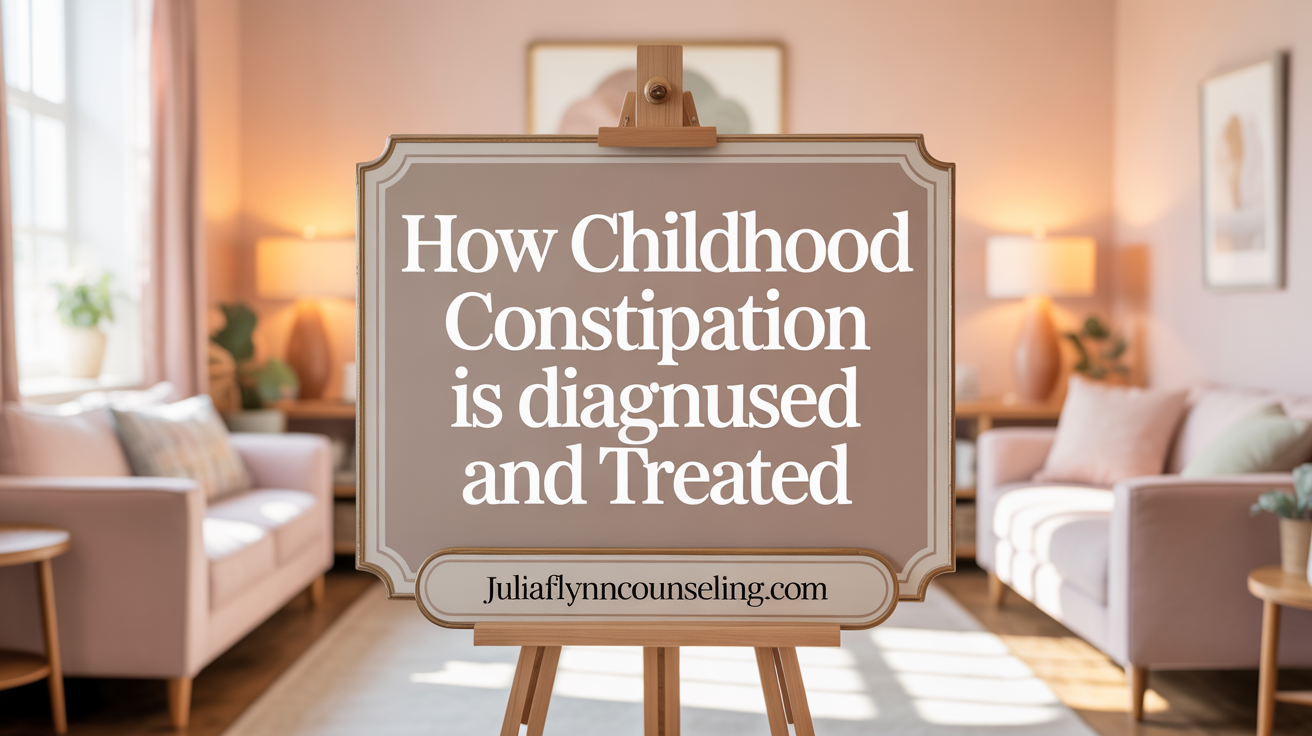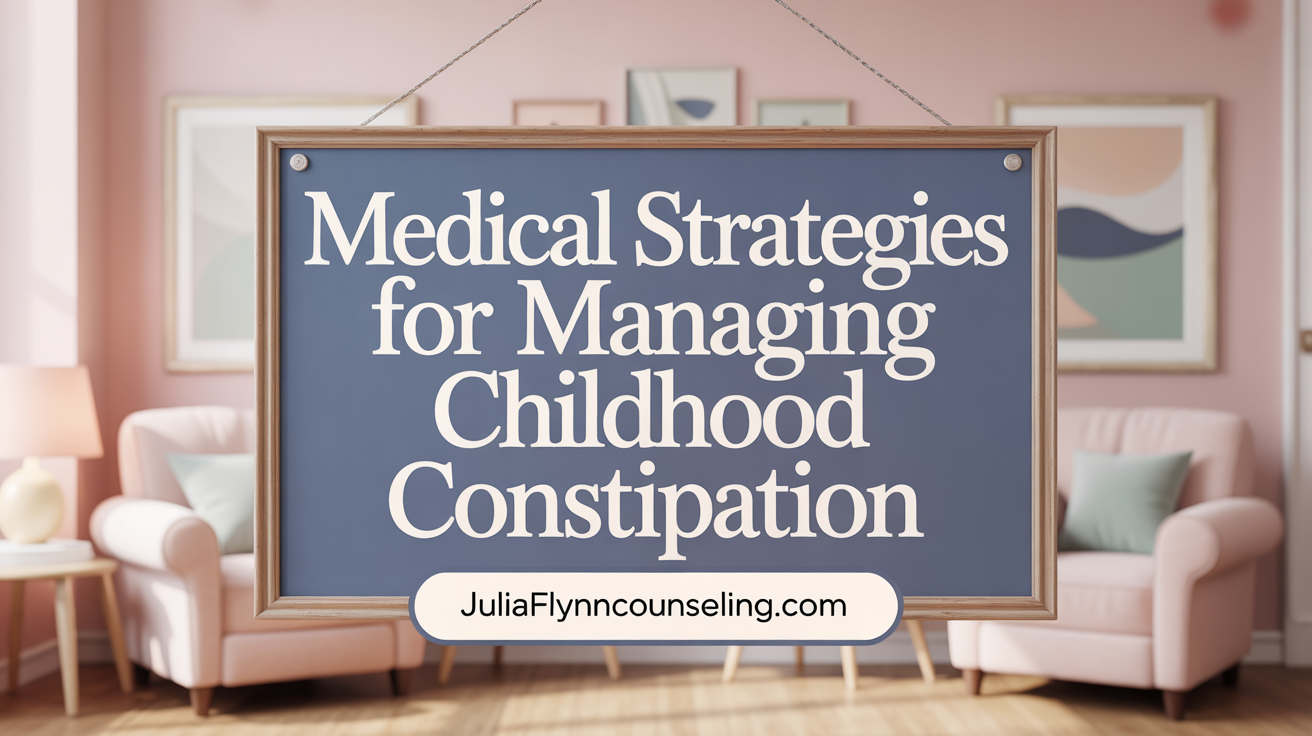Navigating Constipation Challenges in Young Children
Constipation is a common and often distressing condition in young children, characterized by infrequent or difficult bowel movements. While it frequently resolves with simple home care, persistent constipation can lead to discomfort and serious complications if left unaddressed. This article explores the causes, signs, diagnosis, natural remedies, and medical treatments of constipation in children, emphasizing when parents and caregivers should seek professional help for effective management and resolution.
Recognizing the Signs and Symptoms of Constipation in Young Children

What are the common signs and symptoms of constipation in young children?
Constipation in children is usually characterized by fewer than three bowel movements a week, with stools that are often hard, dry, and difficult to pass. Children with constipation may show signs of discomfort, such as pain during bowel movements, and their abdomen might appear bloated or swollen.
Other common indicators include streaks of blood on the stool's surface, which can result from anal fissures caused by passing hard poo. Leakage of liquid stool or stool incontinence is also common when impaction occurs, with liquid stool seeping around the hardened stool inside the rectum.
Children may also display behavioral cues, such as crossing their legs, clenching their buttocks, or resisting the urge to go to the bathroom. These behaviors often stem from fear or pain associated with bowel movements.
Additional signs include abdominal pain, cramping, nausea, loss of appetite, and changes in mood or irritability. Some children might pretend to be ill, refuse to eat, or show reluctance to sit on the toilet.
Recognizing these signs early can help parents seek appropriate care to prevent complications like hemorrhoids or rectal prolapse. It’s important to maintain open communication and monitor bowel habits to ensure healthy digestion and comfort.
For detailed understanding, consult medical resources or a pediatric healthcare provider using search queries related to "Signs and symptoms of constipation in young children."
| Sign/Symptom | Description | Typical Age Group |
|---|---|---|
| Infrequent bowel movements | Fewer than three times a week, with hard, dry stools | All children over 1 year old |
| Hard, dry stools | Difficult, painful to pass, sometimes large and pellet-like | Common in constipation cases |
| Pain during defecation | Children may cry or show discomfort while pooping | All ages, especially potty training |
| Streaks of blood on stool | Due to tears or fissures from passing hard stool | Children with impacted stool |
| Liquid stool leakage | Overflow soiling happening when impacted stool causes seepage | Older children with encopresis |
| Behavioral signs | Clenching buttocks, crossing legs, holding their belly, avoiding toilet use | Pre-school and school-age children |
| Abdominal bloating | Swollen belly or stomach discomfort | All children |
| Vomiting or nausea | Often associated with severe constipation, indicating distress | Moderate to severe cases |
Monitoring these signs can help in early intervention, reducing discomfort and avoiding long-term issues related to constipation.
Causes and Risk Factors Behind Childhood Constipation

What are the common causes of constipation in children?
Most cases of childhood constipation are related to diet and behavior. A diet low in fiber, such as insufficient fruits, vegetables, and whole grains, combined with inadequate fluid intake, often leads to hard, dry stools that are difficult to pass. Additionally, a sedentary lifestyle can slow down bowel movements.
Many children also develop habits of withholding stool, especially during toilet training. Fear of pain, unfamiliar toilets, or rushing can cause kids to postpone defecation, which worsens constipation over time.
How does toilet training and stool withholding contribute?
During toilet training, some children resist using unfamiliar or uncomfortable bathrooms, leading to voluntary stool withholding. This can cause stool to become impacted, stretching and weakening the rectum, and ultimately causing infrequent and painful bowel movements.
What medical or rare organic causes might lead to constipation?
While most constipation is functional and reversible, certain medical conditions can cause chronic issues. Rarely, diseases like celiac disease, hypothyroidism, or Hirschsprung disease are responsible. These organic causes often require specific medical interventions and diagnoses through testing, such as biopsies or imaging.
How do routine changes and medications impact constipation?
Changes in routine—such as starting school, moving to a new home, or the arrival of a new sibling—can disrupt normal bowel habits. Additionally, some medications, like painkillers or iron supplements, can slow bowel movements, increasing the risk of constipation.
In summary, understanding these factors can help caregivers prevent and manage childhood constipation effectively by promoting healthy eating, encouraging regular toileting, and consulting healthcare providers when needed.
Diagnosing Constipation: Clinical Approach and Testing

How can constipation in children be diagnosed?
Diagnosing constipation in children primarily involves collecting a detailed medical history and conducting a physical examination. Healthcare providers ask about the child’s bowel movement patterns, stool appearance, any presence of blood, and behaviors like stool withholding or abdominal pain.
During the physical exam, the doctor may check for signs of dehydration, abdominal swelling, tenderness, or impacted stool. Palpation might reveal a distended abdomen or a large stool mass. Sometimes, a rectal examination is performed to assess muscle tone and check for impacted stool.
Diagnostic tests are generally reserved for cases where organic causes are suspected. These can include blood tests to identify anemia or thyroid issues, stool tests for infections or blood, and imaging studies such as abdominal X-rays, ultrasounds, or barium enemas to visualize the bowel.
In certain situations, more specialized testing may be necessary. Anorectal manometry measures the function of muscles in the rectum and anal sphincter, while a rectal biopsy can help diagnose conditions like Hirschsprung disease.
A standard approach to diagnosis also involves applying the Rome III or Rome IV criteria. These are symptom-based guidelines that specify specific symptom patterns, frequency, and duration to determine whether a child's bowel habits qualify as constipation.
Overall, the diagnosis combines clinical evaluation with targeted testing as needed, ensuring that treatable underlying conditions are identified and appropriately managed.
Natural and Lifestyle Approaches to Relieve Constipation

What are the natural methods to relieve constipation in children?
Children's constipation can often be managed effectively through simple lifestyle and dietary changes. Increasing the intake of dietary fiber is a foundational strategy. Foods rich in fiber such as fruits, vegetables, whole grains, beans, and nuts help promote regular bowel movements. Tailoring fiber intake to the child's age ensures an appropriate and effective approach.
Hydration is equally important. Encouraging children to drink sufficient amounts of water throughout the day, along with natural fruit and vegetable juices, can soften stools and facilitate easier passage. Avoiding excessive consumption of processed and low-fiber foods supports digestive health.
Physical activity plays a vital role in stimulating bowel function. Regular exercise, whether through outdoor play, swimming, or dancing, helps move bowel contents through the intestines. Gentle abdominal massages can also be beneficial; rubbing the stomach clockwise in a circular motion can help relax the intestines.
Establishing a consistent toileting routine is essential. Encouraging children to sit on the toilet at regular times, such as after meals, promotes the body's natural urge to defecate. Proper bathroom posture, such as using a footstool to elevate feet while sitting on the toilet, can make bowel movements easier.
Natural remedies like prunes, pears, apples, and kiwi are often recommended due to their natural laxative effects. These fruits contain sorbitol or fiber that supports digestion and softens stools.
By combining these natural strategies—fiber-rich diet, hydration, physical activity, routine establishment, and natural fruit-based remedies—parents can help children develop healthy bowel habits and prevent or relieve constipation effectively.
Effective Medical Treatments and Management Strategies

What treatments and management strategies are effective for childhood constipation?
Managing constipation in children effectively requires a blend of medication, behavioral changes, and sometimes specialist intervention. The primary medication used for treating childhood constipation is polyethylene glycol (PEG), commonly known by brand names like Miralax. This osmotic laxative works by softening stools and increasing bowel movements, and it is often used for both disimpaction (cleaning out impacted stool) and ongoing maintenance.
PEG is administered in carefully adjusted doses to achieve soft, regular bowel movements. Besides PEG, other medications such as lactulose, stimulant laxatives, and lubricants are options, typically used under medical supervision to avoid potential side effects like cramping or dependence.
Behavioral strategies are equally vital. Structured toilet routines—such as sitting on the toilet for 10-15 minutes after meals—help establish regular habits. Reinforcement tools like rewards or praise encourage children to follow through with these routines.
A diet rich in fiber, from fruits, vegetables, and whole grains, combined with adequate fluid intake, supports stool softening and easier passage.
In cases where symptoms persist despite these measures or if underlying medical causes are suspected, consulting a pediatric gastroenterologist is advised. Tests might include rectal exams, blood work, or imaging to rule out conditions like Hirschsprung disease or anatomical abnormalities.
Overall, successful treatment often involves a combination of medication to manage symptoms and behavioral modifications to establish lasting healthy bowel habits.
Recognizing Urgent Symptoms and Complications Requiring Immediate Care
Are there any urgent symptoms or complications of constipation in children that require immediate medical attention?
Yes, certain symptoms and complications associated with childhood constipation demand swift medical response to prevent worsening health issues. Recognizing these signs early can be crucial.
One of the most evident urgent concerns is the presence of anal fissures, which are small tears in the skin around the anus. They often cause severe pain during bowel movements and can lead to bleeding.
Rectal prolapse, another serious complication, occurs when part of the rectum protrudes through the anal opening. This condition causes discomfort, bleeding, and requires urgent medical care.
Signs of severe illness include significant rectal bleeding, persistent or severe abdominal pain, fever, and vomiting. These symptoms may signal infections or other underlying conditions needing immediate intervention.
Fecal impaction, where hardened stool becomes lodged in the rectum, can cause bowel obstruction and incontinence of liquid stool. It often requires medical treatment to clear.
Behavioral signs such as a child avoiding the toilet due to pain or fear, combined with worsening symptoms, should also prompt urgent medical consultation.
Furthermore, if a child exhibits weight loss, decreased activity, or neurological signs like weakness or difficulty walking, these may indicate more serious underlying issues.
Timely recognition and healthcare intervention are vital. Early treatment can prevent complications such as anal fissures, rectal prolapse, and chronic constipation. When in doubt, consulting a healthcare provider promptly ensures the child’s safety and well-being.
For more detailed information, you can search for "Urgent medical signs in childhood constipation" online, which provides guidance from pediatric health experts.
Prevention Strategies and Supporting Healthy Bowel Habits in Children
What are the dietary guidelines for prevention?
A balanced diet rich in fiber is crucial for preventing constipation in children. Encourage the consumption of fruits, vegetables, beans, and whole grains, which provide the necessary dietary fiber to promote healthy bowel movements. Limiting processed foods, fast foods, and high-fat items helps maintain regularity. Additionally, restricting cow’s milk intake to less than 20 ounces per day can reduce the risk of stool withholding.
Why are hydration and physical activity important?
Adequate fluid intake is essential for softening stools, making them easier to pass. Children should drink plenty of water and use fluids like prune or pear juice as appropriate for their age. Regular physical activity encourages gut motility, aiding in preventing stool buildup. Encouraging active play outside helps maintain normal bowel patterns.
How can positive behavioral reinforcement support routines?
Establishing a consistent bathroom routine is effective. Encourage children to sit on the toilet at regular times, especially after meals, for about 5-10 minutes. Using positive reinforcement like stickers, praise, or watching a favorite show can make the experience pleasant, fostering long-term healthy habits.
Why should we avoid punishing children for accidents?
Children do not intentionally soil their clothes or withhold stool. Punitive reactions can lead to anxiety and worsen constipation. Instead, respond with calmness, support, and reassurance. Celebrating progress and encouraging patience can help children feel comfortable and motivated to develop healthy bowel habits.
When should parents be concerned and seek medical help for a child's constipation?
Parents should seek medical attention if constipation lasts longer than two weeks, or if additional symptoms such as fever, pain during bowel movements, blood in the stool, abdominal swelling, or vomiting occur. Signs of severe illness, inability to pass stool despite home remedies, or if the child appears very sick require urgent care. Early professional guidance can prevent complications like anal fissures, rectal prolapse, or behavioral issues related to stool withholding.
Taking Action: When to Seek Help and How to Support Your Child
Constipation in young children is a common issue that parents and caregivers can often manage effectively with dietary, behavioral, and lifestyle interventions. Recognizing early signs and understanding causes play critical roles in prevention and treatment. However, persistent or severe constipation demands timely medical evaluation to rule out underlying conditions and prevent serious complications. Through a combination of attentive care, natural strategies, and professional guidance when necessary, families can help their children achieve regular, comfortable bowel habits and maintain digestive health.
References
- Constipation in children - Symptoms & causes - Mayo Clinic
- When does my child need to see a specialist for constipation?
- Constipation In Children; When To Worry - Capital Area Pediatrics
- When Does a Child's Constipation Require Medical Intervention?
- Constipation - Seattle Children's Hospital
- Constipation in Children Over One Year of Age
- Constipation in Children - HealthyChildren.org
- Diagnosis of Constipation in Children - NIDDK
- Toddler Constipation: Symptoms, Causes & Treatment
